 A little while ago, a friend returning from Morocco presented me with a big bag of saffron. Or at least he thought he did. What he really gave gave me was a big bag of ground turmeric, a different product altogether. Turmeric is a rhizome (root) while saffron is the vermilion stigmas of the crocus sativus flower, sold in tiny containers like gold dust.
A little while ago, a friend returning from Morocco presented me with a big bag of saffron. Or at least he thought he did. What he really gave gave me was a big bag of ground turmeric, a different product altogether. Turmeric is a rhizome (root) while saffron is the vermilion stigmas of the crocus sativus flower, sold in tiny containers like gold dust.
Saffron is the most expensive spice in the world. Expensive, exotic, exquisite. For me, just the name conjures up images of sumptuous feasts in Persia and India, platters of fragrant yellow rice and roasted meats, and men in turbans and flowing robes.
Iran is by far the biggest producer of saffron in the world (90%) but Spanish saffron comes a very close second when it comes to quality and it is mainly produced in a string of small towns in La Mancha, beneath the windmills of Don Quijote.
Intrigued by this elusive, exclusive spice I made my way to the centre of the country, to town of Villafranca de los Caballeros where I was welcomed by Isidra and her sister Ana, to discover the secrets of saffron. It didn’t take me long to realise why this spice is so expensive. Every stage of the year long production is done by hand and it takes over 4000 flowers to produce just an ounce (28 grams) of dried threads.
Saffron producers like Isidra’s family work the ground throughout the year in order to harvest in the autumn. and a dry spring can all but cripple the crop. From mid October, the flowers appear. They open overnight and have to be picked the next morning. If left in the ground they will be wasted. The harvests lasts for 3-4 weeks.
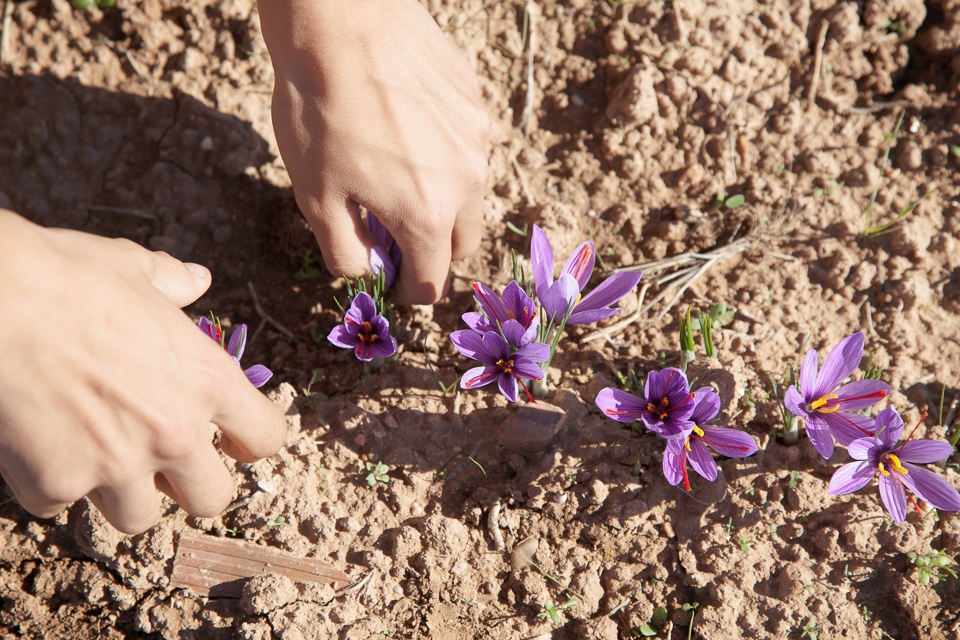
This year hasn’t been a good year. Spring rains were late and the fields of crocuses are patchy, some days with nothing. Still, the day I was there, there were enough flowers for me to see this final stage of production.
Picking is a family affair and everyone pitches in. Bent over double, they work their way carefully down the rows gathering the delicate flowers into their wicker baskets.
Back home, baskets full, everyone gathers around a big table piled with flowers and the work to take out the highly prized stigma begins. After the backbreaking picking, this seemed to me like quite a relaxing job. Neighbours, whose families no longer grow saffron, came and went, helping to reduce the pile, and after a few hours the stigma were ready for toasting. This was done simply by drying out the threads over a gas heater and took no more than about half an hour.
Isidra and her family are certified authentic saffron producers and their product carries the very important “Dominacion de Origin” but when we asked if they could live off producing saffron alone they just laughed. “Last year was a good year”, they told us, “and we barely covered our costs.” How could this be possible? The most expensive spice in the world and they make no money? Bit by bit the story came out and we understood that, as so often happens, the real money is made by the middlemen not by the producers. Isidra sells to people she knows at 3 euros a gram. The same product sells in the local cooperative at 6 euros a gram and in shops up to 12 euros a gram.

Isidra and Ana are only too aware how unattractive it is to their children to continue this tradition. With such a small profit it’s hard to convince them it is worth it. They are also aware of how easily this production could be exploited by companies bringing in outside workers. So the conversation turned to how the sisters could take control and market their saffron themselves.
We left at the end of the day with hugs and kisses, our little packages of beautiful red saffron, and lots of ideas of how this family could hold on to their tradition.
In the meantime, if you would like to buy some just send an email to Isidra at isi-toribio@hotmail.com, or contact me. I will be making an order in the very near future and can distribute around Andalucia and in UK. I can assure you, it’s not turmeric, it’s not sawdust. This is the real thing and I might have even picked it!
Just one last word. If you find these posts interesting, please share with your friends. You can copy the URL or use the share button. Thanks!

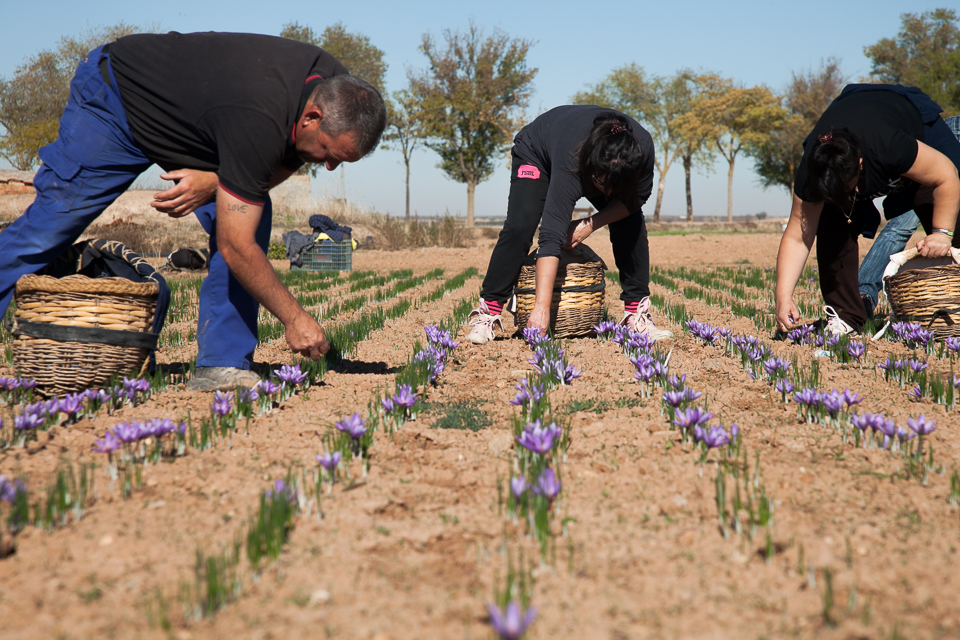
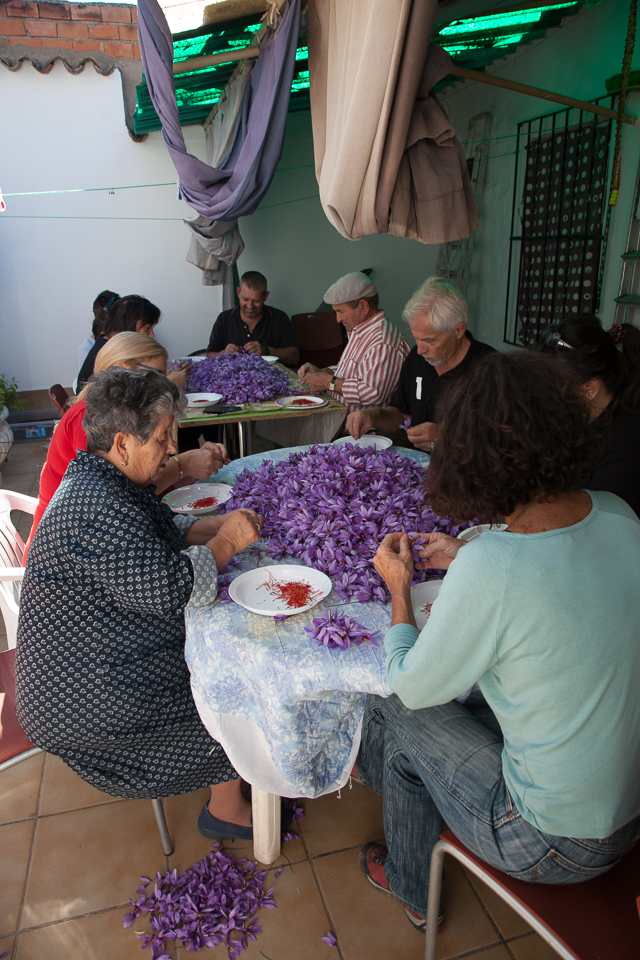
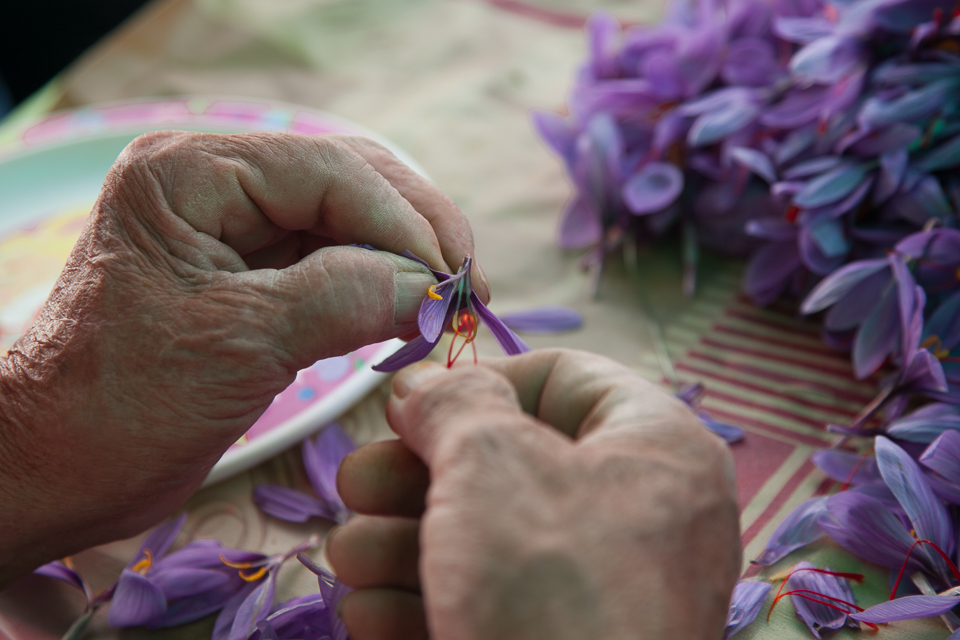
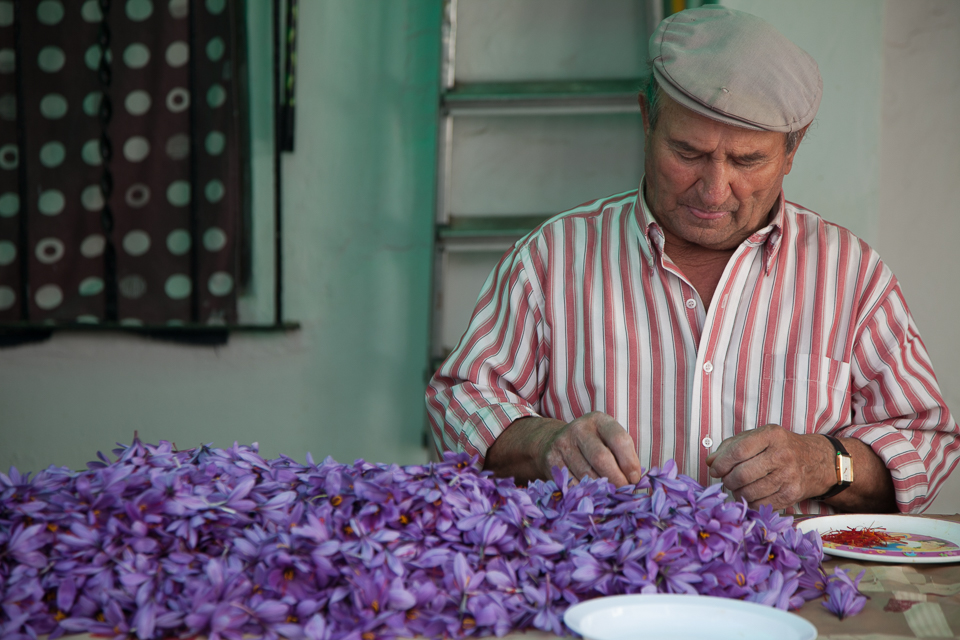
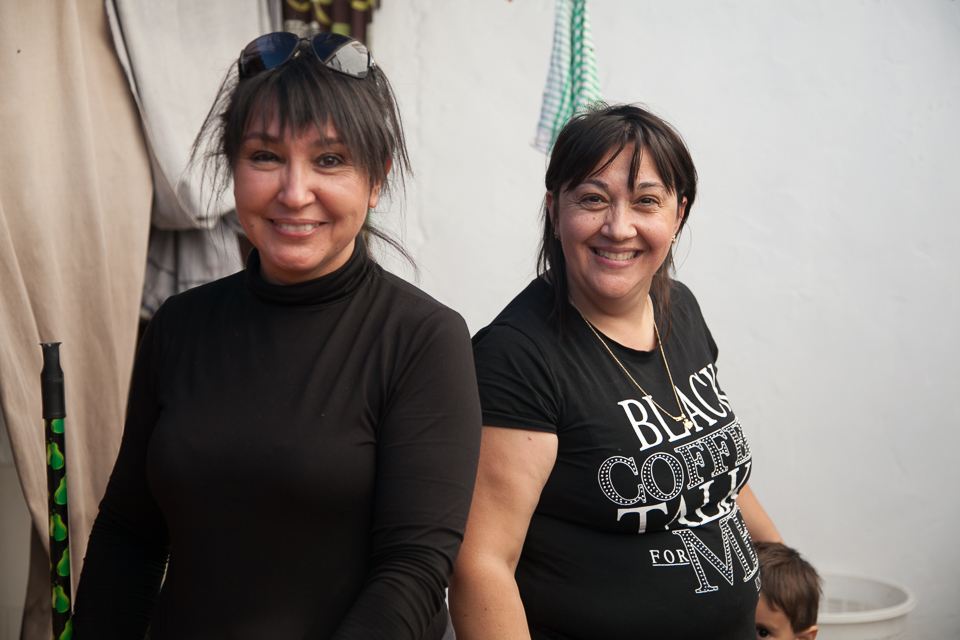

Liz astill says
So labour intensive…..and so precious.lovely photos.
Gidon Minkoff says
It looks beautiful. Wish I had been there with you!
Philip Minkoff says
Another great post, Sharon and, yes, please do order a 4 or 5g for us. Hope you and Gidon are well.
Joy says
Beautiful photos(as per usual!) and very interesting read. Couldn’t watch the video though 😔 Hope all is well there 😘
Maudy says
Beautiful Sharon! Lovely written and as always, your photos tell the story! I have a whole new appreciation for Saffron now.
Joyce says
So interesting and informative as always – and lovely photos!! xo
elina says
pues ahora espero que prontamente llegue “Cooking with Saffron!” asi añadiré el gusto a las sensaciones que disfruté mientras recogía y separaba estambres de azafrán!! Gracias Sharon por tu trabajo de documentación, que me hace revivir esos momentos!
Sharon says
Y gracias a vosotros por vuestra buena compania …Genial, todo!
Marianne S says
Hi, Sharon: how beautiful pictures of picking the krokus (norwegian), which normally is the first flower coming up from the soil in March/April after the snow has disappeared. I use to buy in cooperativas agricolas when in Espana, but still quite expensive. Both in Norway and Sweden saffron is being but into the dough of sweet cakes (made of dough with yeast) to the day of Santa Lucia, December 13. I am going to make. You can see them on google.no, seaching for lussekatter (means lucys cats). Hugs, Marianne
La Casa Rosa says
Dear Sharon!
It was beautiful to listen from you, but to read you with the phto work s always another new experence.
Thank you and congrats for your great work.
Sorry to arrive, sometimes, very late.